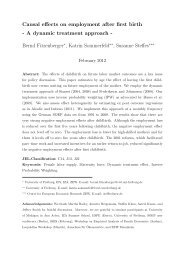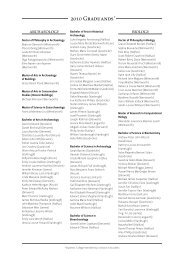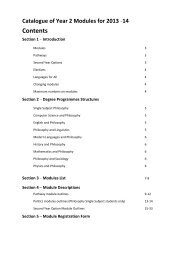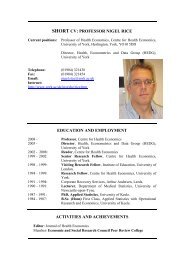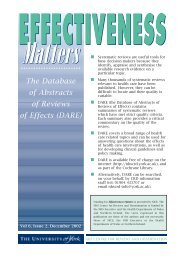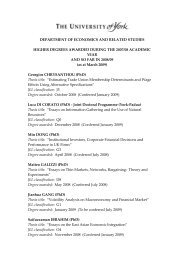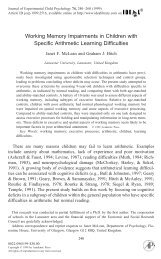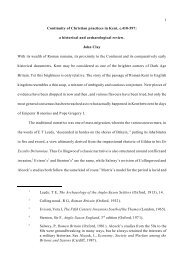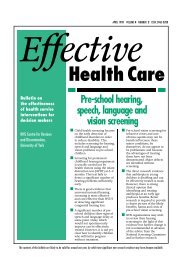GeloriniPhD (PDF , 6973kb) - University of York
GeloriniPhD (PDF , 6973kb) - University of York
GeloriniPhD (PDF , 6973kb) - University of York
Create successful ePaper yourself
Turn your PDF publications into a flip-book with our unique Google optimized e-Paper software.
. 29 .<br />
INTRODUCTION<br />
analysis <strong>of</strong> fossil NPPs produces a unique palaeoecological archive, adjacent to pollen and other proxy indicators (such<br />
as phytoliths, diatoms, din<strong>of</strong>lagellates etc.) to provide insights into past environmental changes.<br />
The majority <strong>of</strong> NPPs are the ascospores, conidia and chlamydospores <strong>of</strong> fungi, mainly derived from (i) pathogenic<br />
fungi (Fusarium and Puccinia), (ii) mycorrhizal fungi (e.g., Glomus), and (iii) saprotrophic fungi (decomposers), <strong>of</strong> which<br />
some may be coprophilous i.e. obligately growing on herbivore dung (e.g., Sordaria and Podospora). It is suggested that<br />
most fungal spores deposited in and recovered from lake sediments, are fossilised at, or near, their source area where<br />
sporulation occurred (van Geel, 2001; van Geel and Aptroot, 2006).<br />
Coprophilous spores as anthropogenic indicators<br />
In European palaeoecological studies (e.g., Willemsen et al., 1996; van Geel et al., 2003; Mazier et al., 2009), there is a long<br />
tradition to link fossil spores <strong>of</strong> saprotrophic Ascomycota (= ascomycetes) to past livestock keeping, because these fungi<br />
may be associated with the excrements <strong>of</strong> large herbivores, including soil contaminated with herbivore dung. However,<br />
the term ‘coprophilous’ is not always properly used, making the relationship with wild and/or domestic herbivores more<br />
ambiguous. In fact, most <strong>of</strong> the saprotrophic genera (e.g., Cercophora (as part <strong>of</strong> Lasiosphaeria), Coniochaeta, Apiosordaria<br />
and Chaetomium) which are classified as ‘coprophilous’ have representatives that are hosted on other substrates such<br />
as dead wood and plant debris (Hanlin, 1990; Romero et al., 1999; Asgari et al., 2007; Mukerji, 2010). Only a few genera<br />
(e.g., Sordaria, Podospora, Delitschia and Sporormiella) inhabit dung obligately, i.e. exclusively (Ahmed and Cain, 1972;<br />
Bell, 1983; Krug et al., 2004). Because <strong>of</strong> their association with different substrates, the ecological indicator value <strong>of</strong> most<br />
saprotrophs is thus more complex and ambiguous than suggested by their (non-obligate) affinity with dung. Furthermore,<br />
proper identification <strong>of</strong> these fungi, particularly when based on the spores only, is strongly impeded by the difficulty<br />
<strong>of</strong> taxonomic discrimination. For instance, some saprotrophic fungi such as the obligate coprophilous genus Podospora<br />
and the occasionally dung-inhabiting genera Cercophora, Schizothecium and Zopfiella produce morphologically similar<br />
ascospores (Bell, 1983) and are grouped in a single morphotype, which weakens its dung indicator value. Therefore, it<br />
is rather the abundance changes <strong>of</strong> obligate coprophilous spores (e.g., Sporormiella type) recorded in sediment records<br />
which may indicate changes in population density <strong>of</strong> herbivores through time (Davis and Shafer, 2006).<br />
Fig. vi. Life cycle <strong>of</strong> the coprophilous ascomycete Sordaria humicola (from Jennings and Lysek, 1996).



